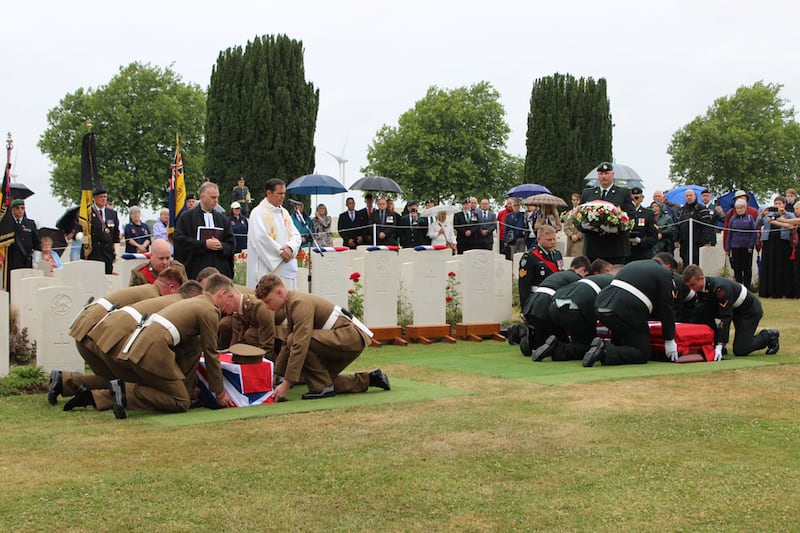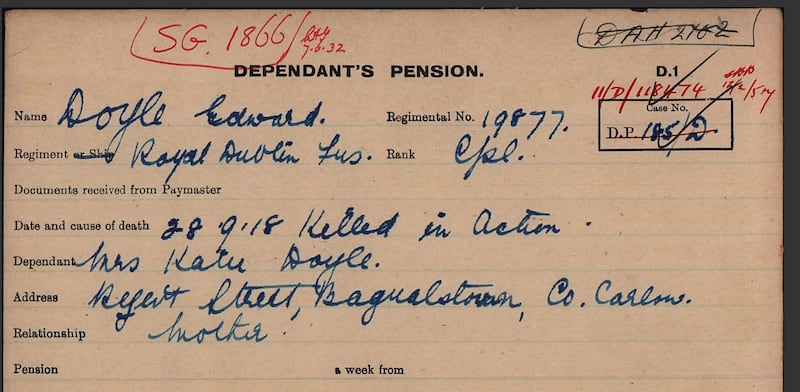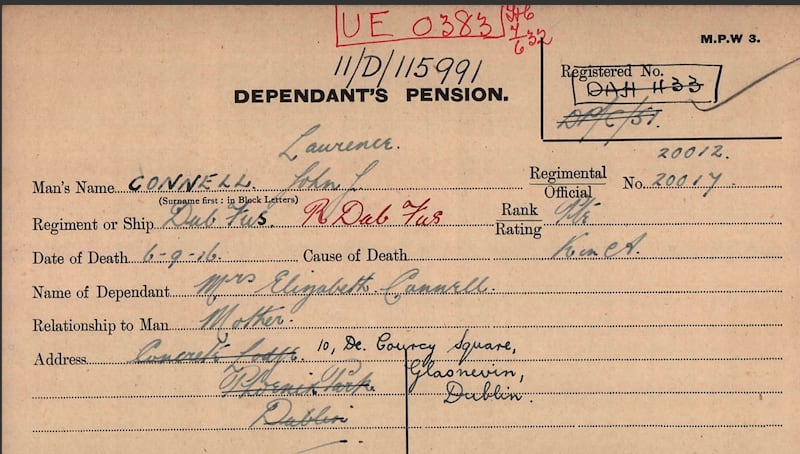Ten men from Irish regiments who died in the first World War and whose graves have been located will be honoured next month.
Rededication services will take place in France and Belgium following research carried out by a group known as the war detectives.
The men are buried in graves, but their headstones only indicate their regiments rather than their names.

Almost half of the 1.1 million British and Commonwealth soldiers who died in the first World War have no known grave. Such was the scale of mutilation and large-scale carnage that it was impossible to identify many of the fatalities found on the battlefield.
CMO Mary Horgan: ‘People often forget how bad infections were; our memories sometimes are short’
Owen Doyle: Chaotic cock-up cost Munster and it reflects badly on a number of people
Dublin-born Irish–American cardinal Kevin Farrell to run Vatican until pope elected
Pope Francis died of a stroke and ‘irreversible heart failure,’ the Vatican has said
In the case of the 10 men for whom rededication ceremonies will take place, they were originally identified only by their uniforms, stripes or cap badges.
Their gravestones state their regiment, but not their names. Their names are instead remembered on memorials such as the New Menin Gate or the Thiepval Memorial to the Missing.
The UK ministry of defence’s war detectives squad, officially known as the Joint Casualty and Compassionate Centre (JCCC), is tasked with matching the graves with regimental diaries which record how and where men died during the war.
Though the first World War ended more than a century ago, the search to identify remains has never stopped.

All of the men involved died in 1918 during the last year of the war when it was then a war of movement.
Sgt John Doherty, who won the Military Medal, was from Letterkenny, Co Donegal. He was killed while serving with the 1st battalion of the Royal Dublin Fusiliers during the German spring offensive of March 1918. He was one of three brothers killed in the war.
Sgt Lawrence Connell from Glasnevin in Dublin was killed in October 1918 a month before the war ended and buried in Dadizeele New British Cemetery as an unknown serjeant (sic) of 1st Battalion the Royal Dublin Fusiliers.

Second Lieut Joseph Bryson from Newtowngore, Co Leitrim, won the Military Cross posthumously for bravery while with the Royal Irish Fusiliers, but he also died in October 1918. His brother Thomas was also killed in the war.
Capt Valentine Knox Gilliland from Derry was a member of the pre-war Ulster Volunteer Force. He was killed in Belgium in May 1918 while fighting with the Royal Irish Rifles.
Cpl Edward Doyle from Bagnelstown, Co Carlow, was only 21 when he was killed on September 28th, 1918. He was buried along with three other Royal Dublin Fusiliers soldiers: Private Bertie Reynolds Lance Cpl George Washington and Lance Corporal James Freer who were English.
After the war, the remains of all four men were buried in Plot XVII, Row B, in Hooge Crater Cemetery, Belgium. They were recorded as having been soldiers of the Royal Dublin Fusiliers. Their graves have now been identified.
The graves of second Lieut William Cunningham and Private William McCann, who were Scottish and fought for the Royal Irish Fusiliers and Royal Dublin Fusiliers respectively will also be rededicated.
A JCCC spokesperson said relatives are welcome to attend the services and some have already confirmed their attendance.
The prayer and hymn service usually ends with the presentation of a folded union flag to relatives given that they died fighting for the British army, but this can be waived at the request of the relatives
The rededication services take place on July 9th, 10th and 11th. The details are here.
- Sign up for push alerts and have the best news, analysis and comment delivered directly to your phone
- Join The Irish Times on WhatsApp and stay up to date
- Listen to our Inside Politics podcast for the best political chat and analysis













